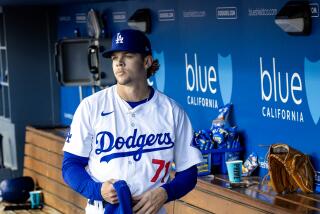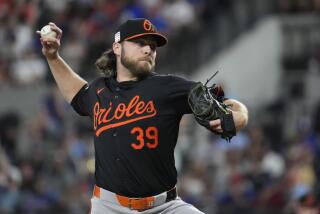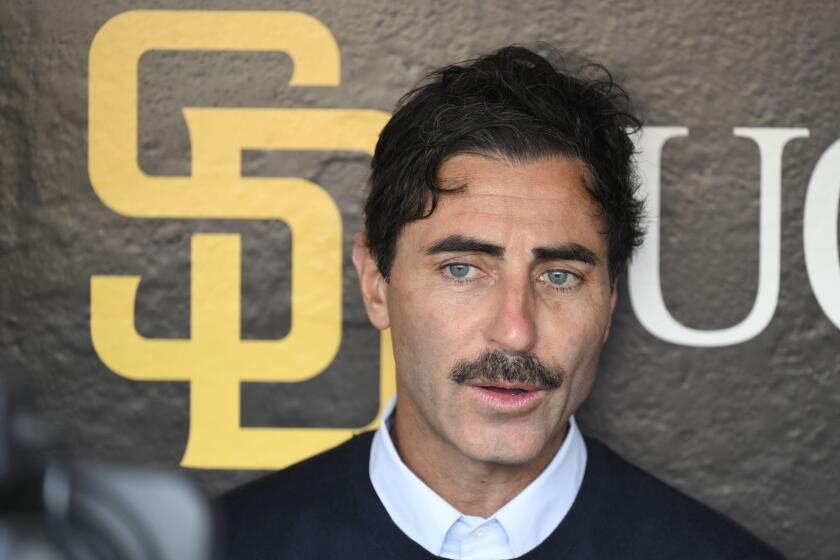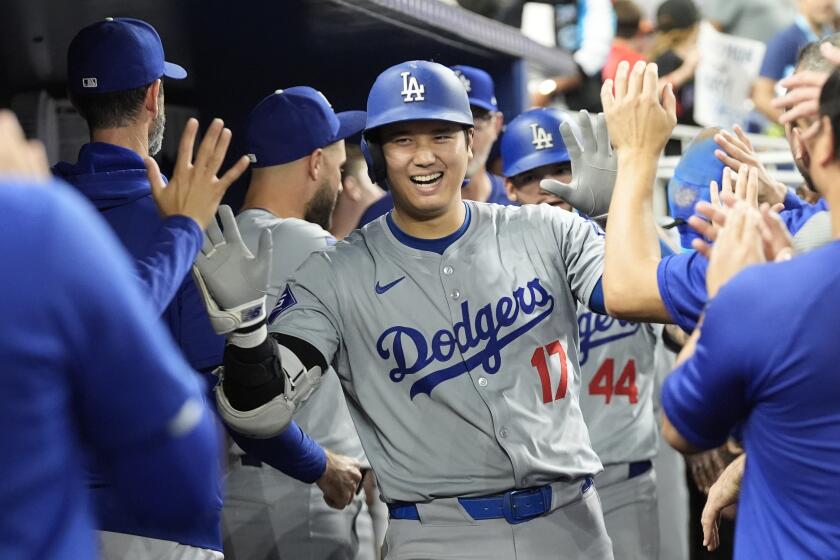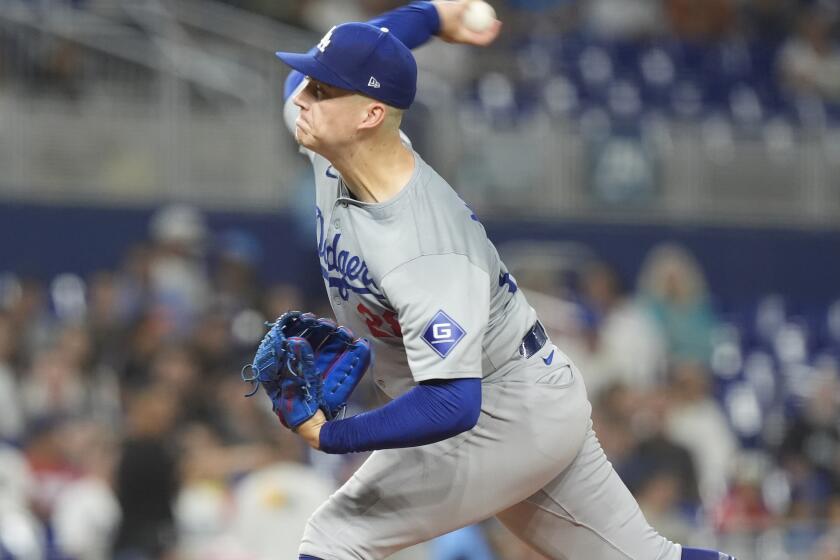Commentary: Dodgers’ new front office shows creativity with exciting moves
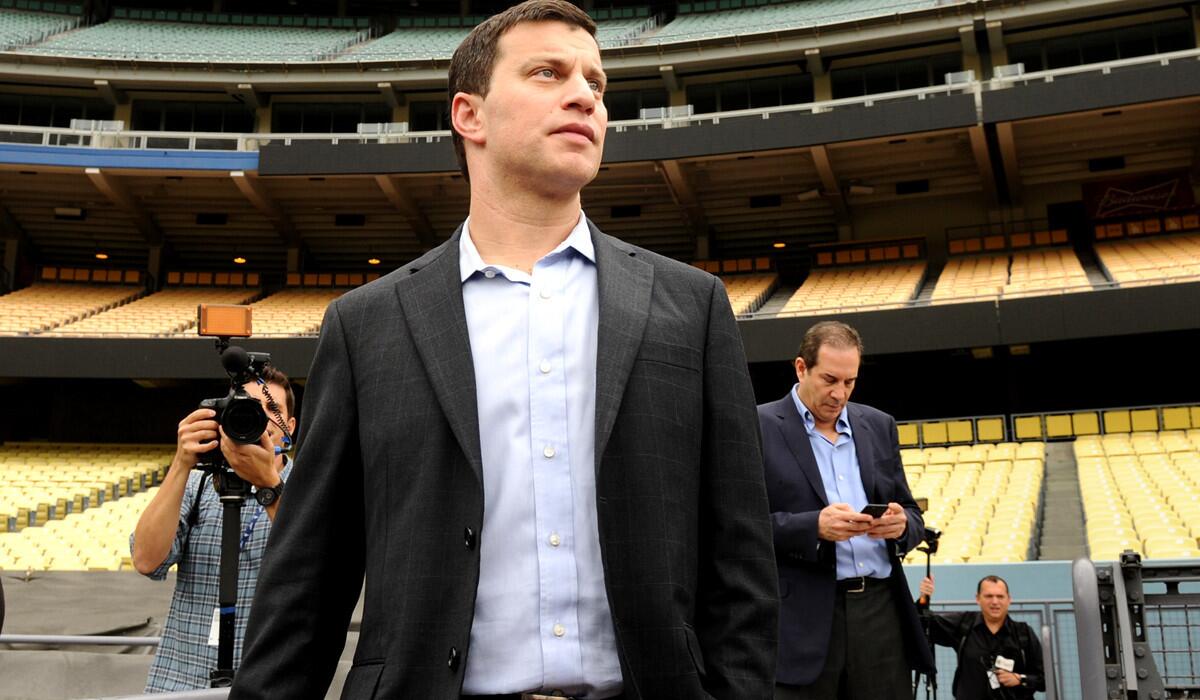
The last general manager to win a World Series in Southern California was Bill Stoneman, the architect of the 2002 Angels.
Stoneman was a Plan A guy. When he talked to another general manager, Stoneman had a pretty firm idea of what he wanted to do. If the other guy did not agree, Stoneman thanked him and moved on. Plan A or bust.
It was a linear operation. Do this, do that, then do something else. One step at a time.
Stoneman deserves all the credit in the world for turning the Angels into winners. But what unfolded Wednesday at baseball’s winter meetings is fascinating and breathtaking, the sign of a new Dodgers front office that can marry a huge imagination with a huge wallet.
Within a couple of hours after lunch, word spread that the Dodgers had agreed to separate deals in which shortstop Jimmy Rollins was coming, second baseman Dee Gordon, pitcher Dan Haren and shortstop Miguel Rojas were going, four prospects were coming and two were going.
And, within a couple of hours after dinner, the Dodgers had replaced Gordon by flipping one of those incoming prospects to the Angels for Howie Kendrick, and they had replaced Haren with a younger model, reportedly nearing a deal with Brandon McCarthy to fall in line behind Clayton Kershaw, Zack Greinke and Hyun-jin Ryu in the starting rotation.
The Dodgers could just be getting started. Outfielder Matt Kemp could go, in part for prospects that could be packaged with the ones obtained Wednesday, in order to tempt the Phillies to trade pitcher Cole Hamels to the Dodgers.
Or the Dodgers could throw out the prospect package to all comers and see what team swaps its ace first. The Phillies, for Hamels? The Detroit Tigers, for David Price? The Washington Nationals, for Jordan Zimmermann?
Or the Dodgers could keep the prospects to revitalize their thin minor league system. They could dip into free agency to complete their rotation, with Max Scherzer as a third elite starter, or with James Shields as what could be the best No. 3 starter in the game.
What makes all of this so compelling is that trades of this magnitude do not happen with one phone call. Andrew Friedman, the Dodgers’ president of baseball operations, and Farhan Zaidi, the general manager, have juggled so many balls over not so many days.
There is no Plan A or bust with this new front office. There is Plan A, Plan B and Plan C for every trade on the table, and there is Strategy A, Strategy B and Strategy C depending on how each trade plays out. With the three trades on Wednesday — the Dodgers had not yet made the moves official — Friedman has made 10 trades in 25 days.
The first wave was about depth, even if Dodgers fans grumbled about an anonymous cast of Mike Bolsingers, Chris Heiseys and Kyle Jensens. Now the big names have come into play, and the plans have come into public focus.
It has been a decade since the Dodgers were so dramatic on the trade front in such a short span. In 2004, in his first year as the Dodgers’ general manager, Paul DePodesta made four trades in two days, each with a separate club, involving 17 players, most notably importing Hee-Seop Choi, Steve Finley and Brad Penny and exporting Paul Lo Duca, Guillermo Mota and Dave Roberts.
To say the Dodgers are a better team today than yesterday would be premature. To say they are a more exciting team would be inarguable, not on the field, necessarily, but in the front office.
Baseball never has seen a management team with so much creativity and so much money. The curtain has been raised on a new kind of showtime.
More to Read
Are you a true-blue fan?
Get our Dodgers Dugout newsletter for insights, news and much more.
You may occasionally receive promotional content from the Los Angeles Times.

